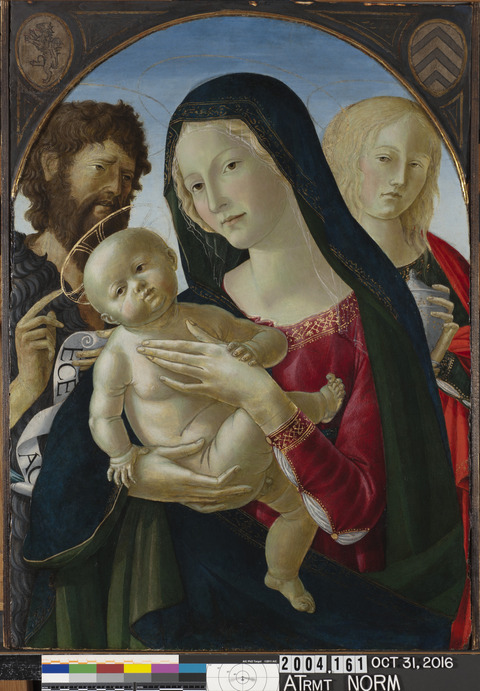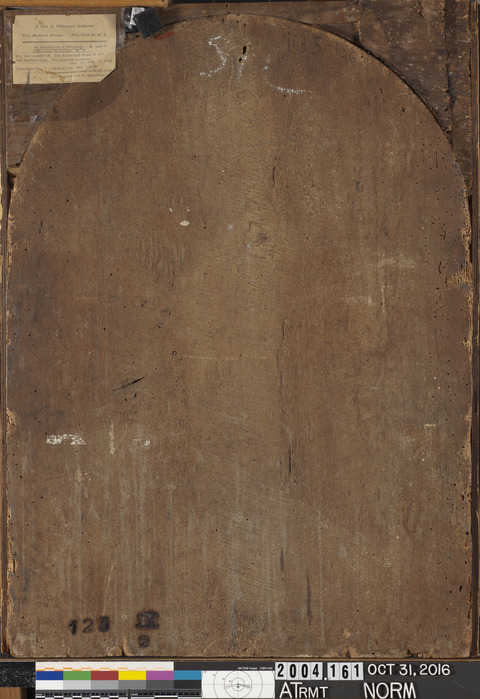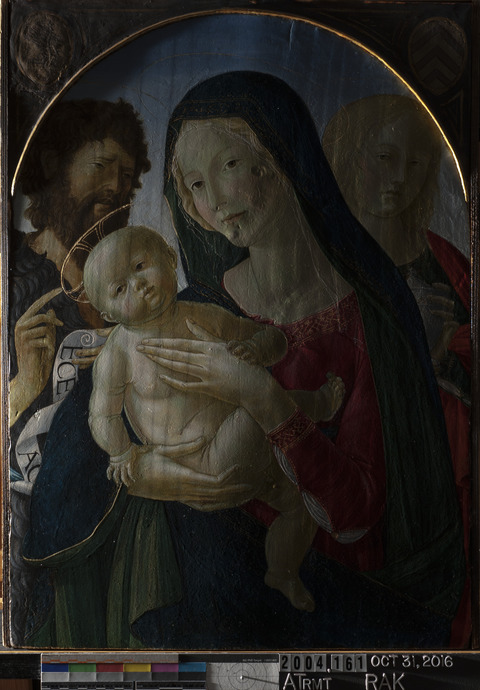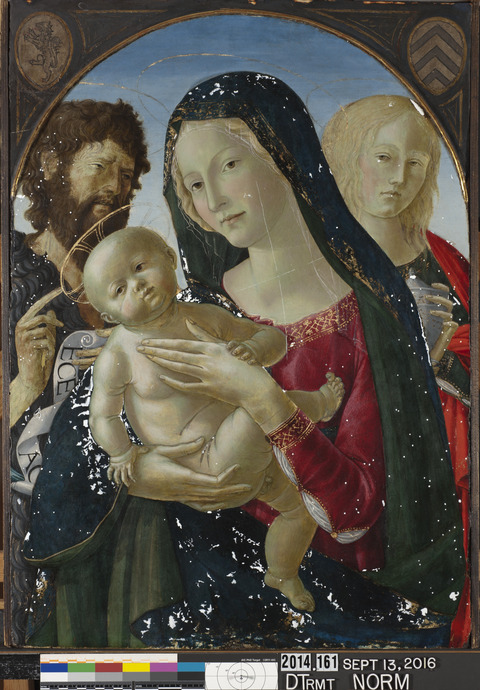Overview
Identification number: 2004.161
Artist: Neroccio di Bartolomeo de' Landi
Title: Madonna and Child with St. John the Baptist and St. Mary Magdalene
Materials: Egg tempera on poplar panel
Date of creation: mid-1490s
Previous number/accession number: C10058
Dimensions:
70.5 × 50.7 cm (central arched panel)
71.9 × 52.5 cm (panel with spandrel and edge strips)
Conservator/examiner: Erica Schuler with contributions from Roxane Sperber
Examination completed: 2016
Distinguishing Marks
Front:
Item 1. Banderole held by St. John the Baptist: “ECE…A*” 1
Item 2. The motif in the top, proper right corner depicts a lion standing on its hind legs and positioned facing the painting’s proper right edge (tech. fig. 1). The lion is outlined in black, and its claws, tongue, and genitalia are accented in red paint. An additional rectangular strip of canvas is adhered at the base of the oval that bears what appears to be an overpainted and illegible inscription or design. This addition is not repeated on the opposite motif and neither the infrared reflectogram nor the radiograph clarifies the markings.2
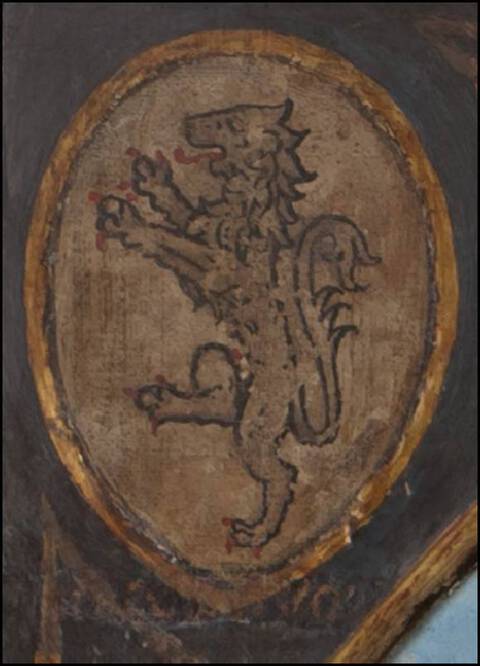
Item 3. The motif in the top, proper left corner depicts a monochrome upward-pointing three chevron design
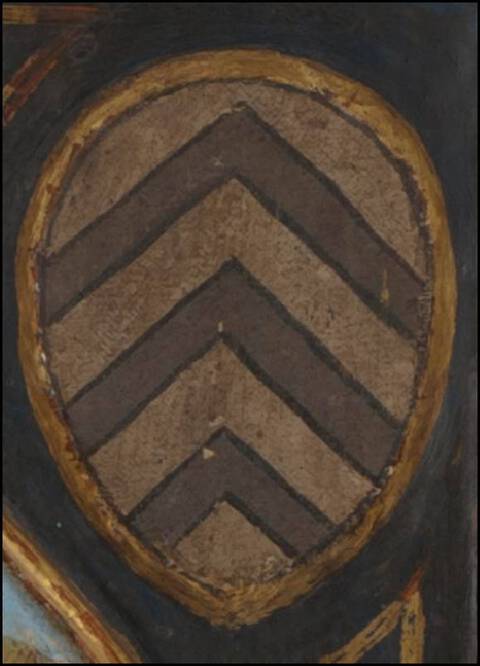
Back:
Item 4. Silberman Galleries paper exhibition label within proper top-left corner: “E. and A. Silberman Galleries / 1014 Madison Avenue New York 21, N.Y. / An Exhibition of Paintings – E. and A. / Silberman Galleries, N.Y. / For the benefit of : The research Fund of Art / and Archaeology, The Spanish Institute / Oct. 12 – Nov. 1, 1955 / Catalogue No. 7 – NEROCCIO DEI LANDI / “Madonna and Child with SS. John The Baptist and M. Magdalen”
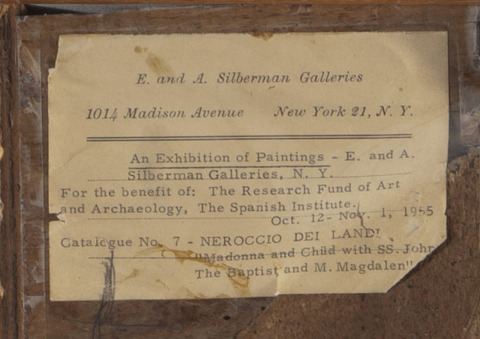
Item 5: The collection mark of Count László Károlyi, who owned the painting from about 1913–1936, is burnt into the panel’s proper bottom-left corner (the same burnt-in collection mark is present on the back of the frame’s bottom rail, see tech. fig. 17): “123 / LK / P”
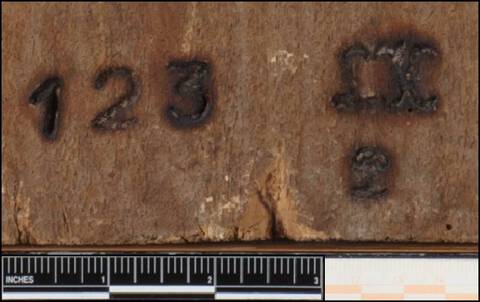
Item 6. Handwritten inscription in dry medium at the panel’s top edge: “135 – 136”
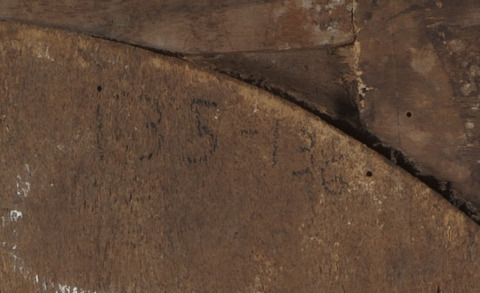
Item 7: Inverted handwritten inscription, top-center which appears to be “26 18”
Item 8: Indianapolis Museum of Art accession number in red paint, top left-center: “2004.161”
Summary of Treatment History
At an unknown date prior to 1908, the painting’s arched shape was modified into a rectangular format by the addition of a painted wood spandrel. The spandrel is nailed directly to the top edge of the panel, and a rib is adhered over the seam to bridge the join.
Documentation suggests a series of condition assessments and treatments were carried out on the collection around the time the works were moved from the Clowes' residence to the IMA in 1971. A condition report by Paul Spheeris in October of that year, likely carried out before the paintings were relocated, described the painting as having a “bad frame.” He recommended cleaning for the sake of the appearance but noted that the painting was otherwise stable.3
A second condition assessment was carried out upon arrival of the paintings at the IMA. This assessment describes the work as being in poor condition with scratches across the painting and a heavy layer of discolored natural resin varnish. Furthermore, wormholes extending through the paint layer were identified. Cleaning, inpainting, and patching were recommended. Four X-radiograph plates of the painting was made at this time.4
In 1996, a memorandum summarizing treatment and examination of the Clowes Collection from the time it entered the museum suggested that a technical study and cross-section analysis was carried out in 1987.5 A 2016 treatment addressed the appearance of poorly aged restoration materials and included varnish and inpainting removal; aqueous grime reduction in the blue and green paint of the Madonna’s cloak; and loss compensation, inpainting, and varnish application (see tech. figs. 6, 7).
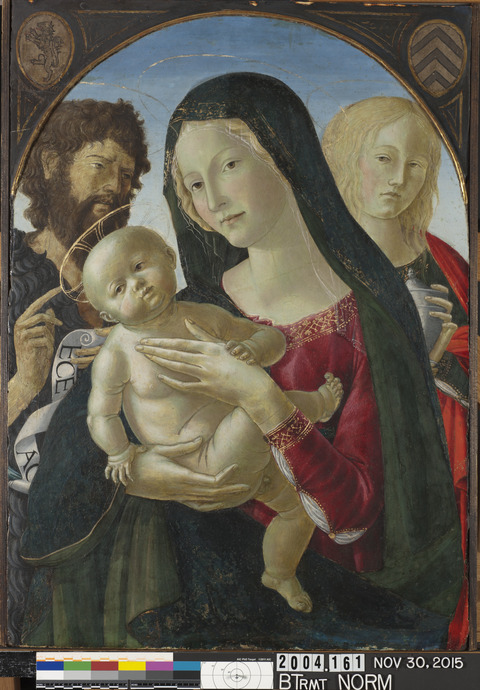
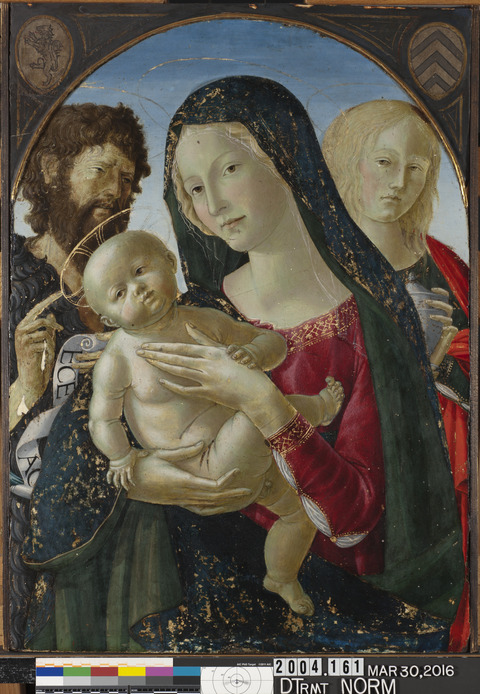
The painting was previously examined and documented in the Clowes Collection annual reports from 2011 to 2020.
Current Condition Summary
The painting is in relatively good condition but exhibits both structural and aesthetic damage caused by a combination of insect infestation, environmental conditions, inherent aging properties of the artist’s materials, and human intervention (vandalism and restoration). The poplar support exhibits a slight convex warp of approximately 0.7 cm at the painting’s center (see tech. fig. 9), internal and external insect tunneling and holes, and a short check at top-center. However, the painting is otherwise stable and secure. Despite internal damage from wood-boring insects, the original thickness and surface (back) appear to have been preserved—consolidation rather than invasive treatment was employed to strengthen and preserve the panel’s structural stability.
The paint and ground layers remain secure and show very good adhesion and cohesion with no sign of incipient insecurity. However, in addition to insect damage, the picture layer shows deterioration of the blue paint of the Madonna’s cloak resulting from both abrasion and inherent aging properties of the artist’s paint; vandalism within the Madonna’s neck and cheek; and the near complete loss of all gold ornamentation that would have originally defined the halos and embroidery on fabric (tech. fig. 7). The painting’s overall aesthetic is markedly improved through loss compensation, inpainting, and varnish application.
Methods of Examination, Imaging and Analysis
| Examination/Imaging | Analysis (no sample required) | Analysis (sample required) |
|---|---|---|
| Unaided eye | Dendrochronology | Microchemical analysis |
| Optical microscopy | Wood identification | Fiber ID |
| Incident light | Microchemical analysis | Cross-section sampling |
| Raking light | Thread count analysis | Dispersed pigment sample |
| Reflected/specular light | X-ray fluorescence spectroscopy (XRF) | Fourier-transform infrared spectroscopy (FTIR) |
| Transmitted light | Macro X-ray fluorescence scanning (MA-XRF) | Raman microspectroscopy |
| Ultraviolet-induced visible fluorescence (UV) | ||
| Infrared reflectography (IRR) | Gas chromatography–mass spectrometry (GC-MS) | |
| Infrared transmittography (IRT) | Scanning electron microscope -energy dispersive X-ray spectroscopy (SEM-EDS) | |
| Infrared luminescence | Other: | |
| X-radiography |
Technical Examination
Description of Support
Analyzed Observed
Material Type (fabric, wood, metal, dendrochronology results, fiber ID information, etc.):
The painting’s structure is composed of two pieces of wood: a single arch-shaped panel, on which the composition is executed, and a spandrel bearing painted motifs of what appear to be a coat-of-arms. The arched support is composed of a radially sawn and vertically grained poplar (Populus spp.).6 The horizontally grained wood spandrel is adhered to the panel’s top edge with four wrought iron nails (tech. fig. 8). A gold painted rib (likely a later addition than the spandrel) is attached over the seam to bridge the join. The addition of the spandrel modifies the painting’s original arched shape into a rectangular format. The spandrel appears old but is not likely original to the support.
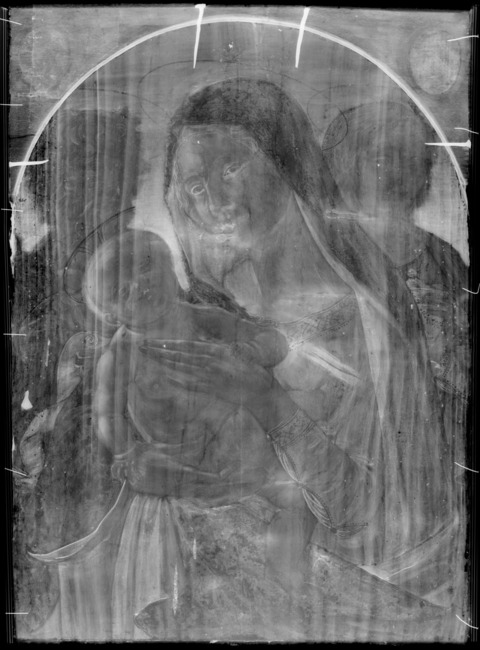
Two oval-shaped pieces of canvas that bear painted motifs are adhered to the corners of the spandrel, one on the top-left and the other on the top-right (tech. figs. 1, 2). An additional narrow strip of canvas is added at the base of the motif on the proper right corner that is not present on the opposite side. A wood edge strip is attached to the left and right edges with machine-made nails—additions made during a relatively recent framing campaign to extend the panel’s width and improve the stability of the painting within its frame.
Characteristics of Construction/Fabrication (cusping, beveled edges of panels, seams or joins, battens):
The poplar support is composed of a vertically grained, radially sawn, arched-shaped panel that was modified into a rectangle by the addition of a horizontally grained wood spandrel. The spandrel is butt joined to the top edge and secured with what the radiograph shows to be four wrought iron nails. The join is bridged on the front of the painting by a protruding curved rib. Under raking light, the central panel’s back shows prominent diagonal tool marks within a relatively wide and shallow groove that extends from the top of the panel to the bottom edge (tech. fig. 9). The groove measures approximately 10.2 cm in width at its widest and tapers as it nears the bottom edge. The shape of the groove appears to follow the natural grain structure, the tool marks are generally confined within the groove, the wood surface within the groove appears to have aged to the same degree as the surrounding surface, and the panel appears to retain its original thickness of 3.5 cm overall (see tech. fig 10). Combined, these observations suggest that material was intentionally excavated from the back at the time of the panel’s construction, perhaps an effort to mitigate the effects of warping over time. The back does not appear to have been treated with a coating.
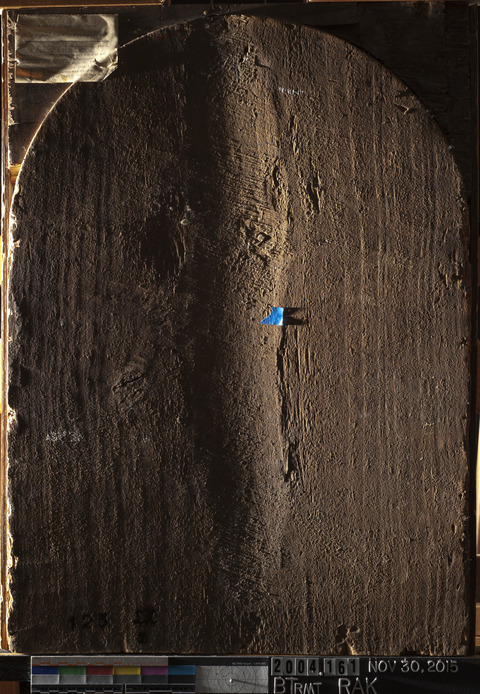
Thickness (for panels or boards):
The poplar panel appears to retain its original thickness of 3.5 cm while the spandrel varies in thickness and degree of finish. The spandrel—possibly repurposed material or a detached frame component—is coarsely routed at the proper right edge and the proper left two-thirds are covered with a 0.4-cm-thick veneer.
Production/Dealer’s marks:
No production marks were identified; however as mentioned above, a collection symbol that reads “123 / LK / P” (see tech. fig 4) is burnt into the panel’s back along the proper left side of the bottom edge. The same collection symbol is burnt into the back of the frame’s bottom rail.
Weave (structure, weight, thread thickness, etc):
Examination of the X-radiograph suggests that the canvas supports, adhered to the spandrel, are a medium-weight, plain-weave structure, the texture of which remains visible through the picture layer.
Auxiliary Support:
Original Not original Not able to discern None
The back appears unaltered from its original construction, and the panel has not been stabilized by the addition of an auxiliary support.
Condition of Support
The support is in relatively good condition. The poplar panel has not been thinned or cradled. It is structurally stable despite damage from wood-boring insects (beetles), a slight convex warp (tech. fig. 10), and a single, previously stabilized 3.9-cm-long check at the panel’s top edge.

Active insect infestation was not observed, but worm tunneling with associated damage to both the support and the paint layer is present. In addition to exit holes that average 1 mm in diameter, a relatively large loss with disrupted paint extends down the length of the Baptist’s raised hand and into the banderole beneath.7 Visible damage appears to be concentrated along the sides of the painting, and comparison of the radiograph with exposed tunneling on the back confirms that the most severe loss of material has occurred within the panel’s left and right edges (see tech. fig. 11). Two indentations noted on the front of the painting—one on Magdalene’s cloaked shoulder (tech. fig 12)8 and the other on the Madonna’s proper-left cheek9—indicate that internal loss is present throughout the support, yet the extent of damage is not readily apparent in the radiograph.
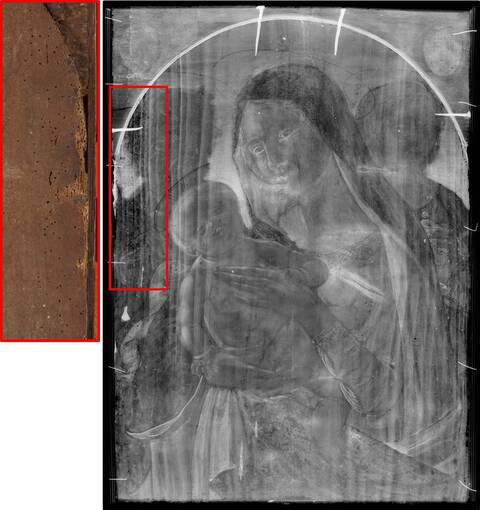
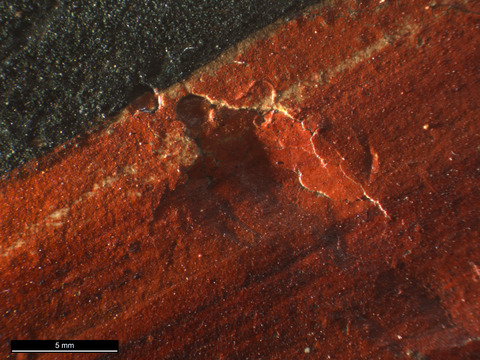
In addition to a slight convex warp of approximately 0.7 cm, another slight deformation has occurred as a result of the wood’s response to environmental conditions over time. A low-relief bulge measuring approximately 1.5 cm in diameter is present in the Madonna’s chin. The protrusion appears to relate to a knot within the wood structure that is visible on the back approximately 24.5 cm from the top-center and proper left edges.
Past consolidation campaigns have left faint tidelines on the back but appear to have successfully stabilized the damaged support, ground, and paint layers. No sign of incipient structural insecurity was noted at the time of this examination. Surface distortions related to internal loss and inherent aging of the wood structure are markedly disfiguring under raking illumination, but their visible effect is negligible when the painting is viewed under normal lighting conditions.
The spandrel is rather crudely constructed, and cracks have developed along the wood grain approximately 6 cm from the bottom of both the left and right sides. However, it remains stable and securely attached to the panel’s top edge. The crack on the proper right extends through the picture layer while the crack on the proper left is contained within the wood support. Additionally, both the spandrel and frame have sustained slight insect damage but not to the same degree as that sustained by the panel (tech. fig. 13).
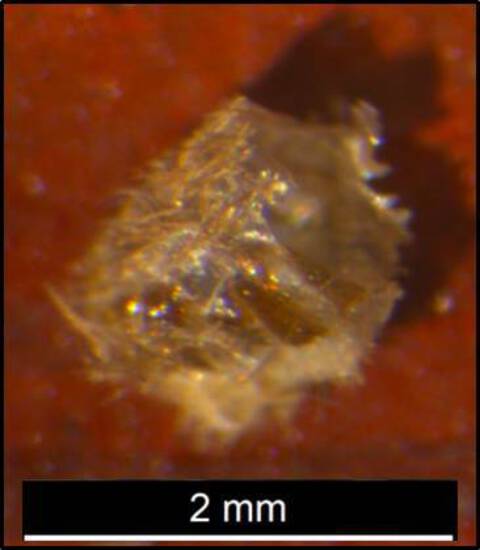
Description of Ground:
Analyzed Observed
Materials/Binding Medium:
XRF analysis confirmed the major presence of calcium within the ground layer, strongly suggesting that the artist-applied preparatory layer is composed of either chalk- (calcium carbonate) or gypsum- (calcium sulfate) based gesso bound in glue—likely gypsum given the painting’s attributed Italian origin (see Table 1; sample 11).
Color:
Exposed ground within losses appears yellowed, while ground observed within minor losses around the periphery appears off-white in color. The ground covering the spandrel is white in color.
Application:
A two-layer ground structure is typical of fifteenth-century Italian panel paintings: a foundation of gesso grosso followed by a fine finishing layer of gesso sottile. However, visual observation aided by low-power magnification shows what looks to be a single layer of relatively thick ground. The ground was uniformly applied directly to the sized panel and the surface subsequently smoothed to mask surface variations and defects.
Thickness:
The ground appears relatively thick, and as described above, it is likely comprised of two ground layers.
Sizing:
Direct observation without analysis cannot confirm the presence of size; however, given the understood techniques implemented in panel preparation during the late fifteenth century, multiple layers of animal glue were likely applied directly to the wood support prior to the application of the ground.
Character and Appearance (Does texture of support remain detectable/prominent?):
The painting’s surface appears relatively smooth under normal viewing conditions. When illuminated under strong raking light, the broad vertical grain of the underlying poplar panel is visible across the composition.
Condition of Ground
The ground appears to display strong and stable adhesion to the support. Micro-craquelure can be observed in exposed passages of ground, but past treatments were successful in stabilizing loss. No signs of incipient structural insecurity were noted during this examination. In addition to insect exit holes, small pinpoint losses caused by handling, multiple framing campaigns, and contact with the frame rabbet are present around the periphery of both the arched panel and the spandrel. Two prominent losses were noted, with the first being an “X”-shaped scratch extending across the Madonna’s cheek and neck and the second a relatively large two-part loss associated with the compromised support within John the Baptist’s hand. All damage noted is old and was previously addressed through fills and inpainting.
The infrared reflectogram (tech. fig. 19) reveals extensive loss to paint and ground where the blue paint was used in the modelling of the Madonna’s cloak.
The spandrel shows abrasion along the top edge in addition to a few pinpoint losses at the left and right edges, but the ground remains intact and secure. A crack has developed through both the paint and ground, approximately 6 cm from the bottom tip of the proper right spandrel that coincides with the crack in the support.
A random network of narrow aperture age and mechanical craquelure is present within the ground and paint on the coat-of-arms. At present, adhesion of the ground appears secure, but past insecurities have resulted in hard-edged losses exposing the underlying canvas.
Description of Composition Planning
Methods of Analysis:
Surface observation (unaided or with magnification)
Infrared reflectography (IRR)
X-radiography
Analysis Parameters:
| X-Ray equipment | GE Inspection Technologies Type: ERESCO 200MFR 3.1, Tube S/N: MIR 201E 58-2812, EN 12543: 1.0mm, Filter: 0.8mm Be + 2mm Al |
|---|---|
| KV: | 22 |
| mA: | 3 |
| Exposure time (s) | 180 |
| Distance from X-ray tube: | 36” |
| IRR equipment and wavelength | Opus Instruments Osiris A1 infrared camera with InGaAs array detector operating at a wavelength of 0.9-1.7µm. |
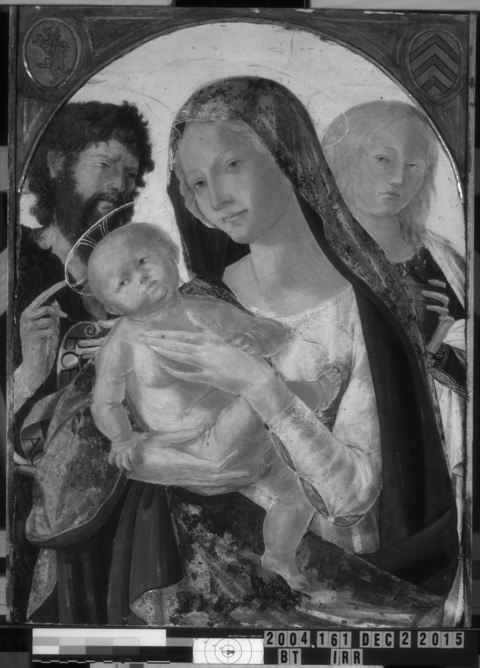
Medium/Technique:
The painting’s composition is characteristic of the numerous devotional paintings and sculptures completed by Neroccio and his workshop throughout his career. He repeatedly employed the composition of a centrally positioned Madonna and Child flanked by two saints. The identities of the saints reflect the patron’s affections, and therefore vary from painting to painting. Features differ, and subtle stylistic changes occur from one painting to the next depending on the period. However, the general figural arrangement remains true to the composition observed in this painting.
Evidence of the artist’s compositional planning can be discerned upon close examination of the surface under various lighting conditions as well as within details revealed in the infrared reflectogram (tech. fig 14). The initial planning of the Madonna and Child appears to have been more elaborate than that of the saints. First, an underdrawing or transfer of the Madonna and Child was likely applied to the ground in a dry medium. Second, the gross forms of the Madonna and Child, as well as modeling within her cloak and robe, were blocked in with precisely executed, bold incised lines drawn directly into the recently applied ground with a pointed hard-edged stylus. Incised lines could not be discerned around or within the figures of the saints. Third, a monochrome underpainting in a fluid carbon-based medium was completed to define highlight and shadow throughout the composition (see tech. figs. 15, 16). Fourth, the skin tones of the faces and hands were completed, and the background and clothing subsequently painted. Fifth, the contours of each figure’s halo were incised within the paint layer. The incised lines of the halos do not extend into the ground and appear segmented, irregular, and narrow in diameter compared with those delineating the Madonna. The final step in the creation of the painting was to complete the gold mordant-gilded decoration. Interestingly, the formerly gilded decoration of each halo does not appear to follow the incised lines (see tech. fig. 10).
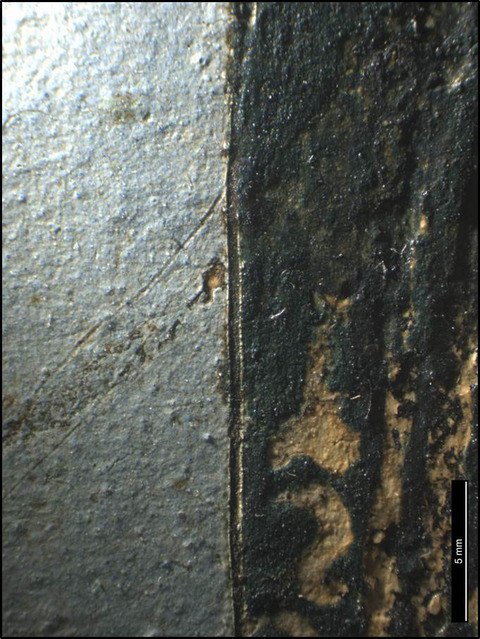
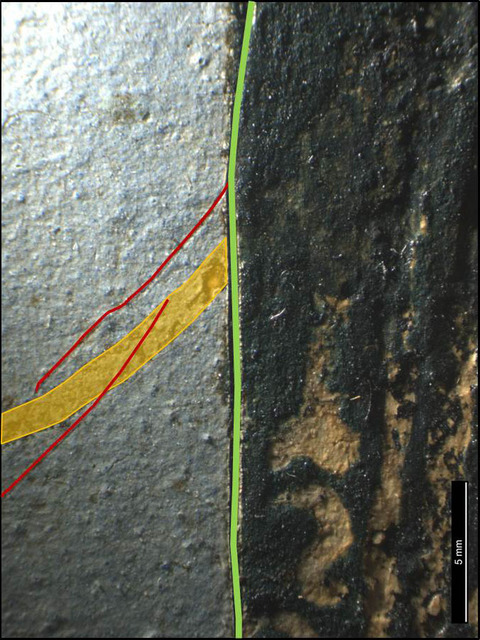
Pentimenti:
There are indications that the artist made slight alterations to the contour of the Madonna’s head, Christ’s proper left cheek, and the index finger of Christ’s proper right hand. These adjustments are discernable in infrared reflectography as well as in visible illumination.
Description of Paint
Analyzed Observed
Application and Technique:
Over the monochrome underpainting that established the modeling of the form, tonal variations delineating the flesh, drapery, and background were applied through layering of delicate, precisely placed, linear brushstrokes of paint. Layering of both light over dark pigment and dark over light were observed. The paint film is generally thin but shows slight variation in thickness between the translucent paint of the skin tones and the granular pigment of the Madonna’s robe and cloak, which are more thickly applied.
Color Palette:
XRF analysis detected a range of elements that indicate a palette typical of the Italian Renaissance (tech. fig. 17). Lead, iron, and calcium were detected across the panel suggesting the abundant use of lead white and iron oxide (earth pigments) over a calcium-containing ground layer.
The technique employed in the blue of the Madonna’s cloak appears to be a two-value system achieved through the use of two different pigments, likely azurite and ultramarine. Analysis of this location using XRF identified a strong peak of copper suggesting the presence of azurite. Ultramarine was identified in other areas of the painting using FTIR spectroscopy.
The green in the Madonna’s mantle was also analyzed using FTIR spectroscopy and XRF. XRF detected a strong peak for copper, and FTIR spectroscopy identified malachite and copper stearate in the green mantle.
Both the Madonna’s red robe and Mary Magdalene’s red robe were analyzed using XRF (Table 1, sample 4, 5). Mary Magdalene’s robe yielded a strong peak for mercury, suggesting the use of vermilion, while a small peak for mercury was detected in the Madonna’s robe. XRF analysis of the red tongue of the lion (Table 1, sample 13) in the spandrel also detected a strong peak for mercury suggesting the use of vermilion. Mercury was also detected in the cheeks of the Christ child and the Madonna.
Two areas of yellow were analyzed, the hair of the Madonna and the yellow stripe on the mantle. In the hair, a strong peak for iron and lead were detected but no tin. This suggests the yellow color comes from a yellow ocher pigment. In the mantle, only a trace of iron was detected, but strong peaks for lead and tin were detected, suggesting the use of lead-tin yellow in this area.
XRF Analysis:
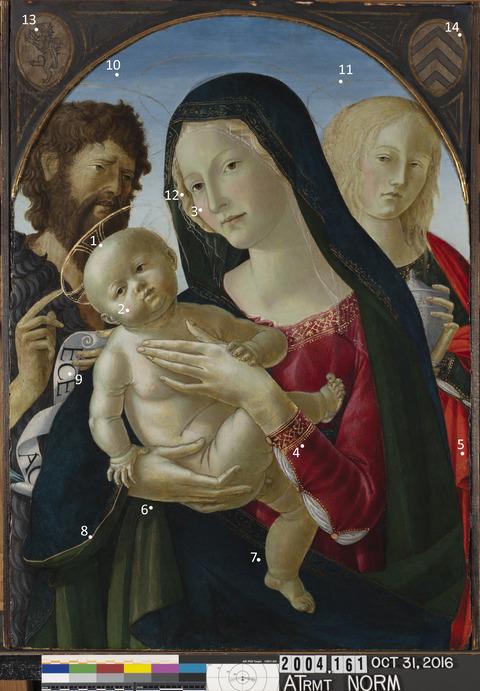
| Sample | Location | Elements | Possible Pigments |
|---|---|---|---|
| 1 | Verdaccio in Christ’s head | Major: Pb Minor: Fe Trace: Ca Cu, K | Lead white, iron oxide (earth pigments likely including green earth), calcium-containing pigment (from ground layer), trace of copper-containing blue and/or green pigment. |
| 2 | Christ’s cheek | Major: Pb Minor: Trace: Hg, Fe, Ca, Cu, K | Lead white, trace of vermilion, trace of iron oxide (earth pigments likely including green earth), calcium-containing pigment (from ground layer), trace of copper-containing blue and/or green pigment. |
| 3 | Madonna’s cheek | Major: Pb Minor: Hg Trace: Fe, Ca, Cu, K | Lead white, vermilion, iron oxide (earth pigments likely including green earth), calcium-containing pigment (from ground layer), trace of copper-containing blue and/or green pigment. |
| 4 | Madonna’s red sleeve | Major: Pb Minor: Ca, K, Hg Trace: Fe, Cu | Lead white, vermilion, possible red lake pigment with a calcium substrate (cannot be confirmed using XRF), calcium-containing pigment (from ground layer), trace of copper-containing blue and/or green pigment, trace of iron oxide (earth pigments likely including green earth). |
| 5 | St. Mary Magdalene’s red robe | Major: Hg, Pb Minor: Ca Trace: K, Fe, Cu | Vermilion, lead white, calcium-containing pigment (from ground layer), trace of copper-containing blue and/or green pigment, trace of iron oxide (earth pigments likely including green earth). |
| 6 | Green mantle | Major: Cu Minor: Fe, Ca, K Trace: Pb | Copper-containing green and/or blue pigment (likely copper resinate), iron oxide (earth pigments likely including green earth), calcium-containing pigment (from ground layer), trace of lead white. |
| 7 | Blue mantle | Major: Cu Minor: Fe, Pb, Ca Trace: K | Copper-containing blue and/or green pigment (likely azurite), lead white, iron oxide (earth pigments likely including green earth), calcium-containing pigment (from ground layer). |
| 8 | Yellow mantle | Major: Pb Minor: Sn, Cu, Ca Trace: Fe | Lead white, copper-containing blue and/or green pigment, lead-tin yellow, calcium-containing pigment (from ground layer), trace of iron oxide (earth pigments). |
| 9 | White scroll | Major: Pb Minor: Ca Trace: Fe | Lead white, calcium-containing pigment (from ground layer), trace of iron oxide (earth pigments). |
| 10 | Blue sky | Major: Pb Minor: Ca, K, Si Trace: Al, Fe, Ti, Cu | Lead white, ultramarine (as confirmed using FTIR spectroscopy), calcium-containing pigment (from ground layer), trace of iron oxide (earth pigments), trace of copper-containing blue and/or green pigment. |
| 11 | Ground in halo | Major: Ca Minor: Pb, K Trace: | Calcium-containing pigment, lead white. |
| 12 | Madonna’s yellow hair | Major: Pb, Fe Minor: Trace: Ca, K | Lead white, iron oxide (earth pigments including yellow ocher), calcium-containing pigment (from ground layer). |
| 13 | Red lion’s tongue | Major: Hg Minor: Pb, Ca, Fe Trace: K | Vermilion, lead white, calcium-containing pigment (from ground layer), iron oxide (earth pigments). |
| 14 | Ground on spandrel | Major: Ca Minor: Pb Trace: K | Calcium-containing pigment, lead white. |
Table 1: Results of X-ray fluorescence analysis conducted with a Bruker Artax microfocus XRF with rhodium tube, silicon-drift detector, and polycapillary focusing lens (~100μm spot).
*Major, minor, trace quantities are based on XRF signal strength not quantitative analysis
Painting Tools:
The paint was applied with fine-tipped hair brushes.
Binding Media:
The thin, precise linear brushwork is consistent with egg tempera painting—dry pigment bound in water and mixed with egg yolk immediately prior to application. FTIR spectroscopy of the light blue paint in the sky and the green paint of the Madonna’s cloak confirm the presence of an egg-containing binder.
FTIR-Spectroscopy:
| Sample | Location (H × W from bottom-left corner) | Analysis |
|---|---|---|
| 1 | Darkened coating within halos (61.7 × 14.4cm) | IPR0035 Egg (yolk), aged 58 yrs+, Gettens, panel 52,26, PMA, tran; ISR00080 Poly(methyl methacrylate), SPP, Inc., WM, tran |
| 2 | Light blue paint, sky (48.9 × 0.4cm) | IPR0035 Egg (yolk), aged 58 yrs+, Gettens, panel 52,26, PMA, tran; IMP00107 Lead white, all basic lead carbonate, source unknown, PMA, tran; IMP00124 Cerrusite, w/minor CH impurity, SI-NMNH, #155584, PMA, tran; IMP0048 Lapis Lazuli, Badakshan, AW3-3, GCI, tran |
| 3 | Green, Madonna’s cloak (0.0 × 2.9cm) | IPR0035 Egg (yolk), aged 58 yrs+, Gettens, panel 52,26, PMA, tran; IMP00274 Malachite, Kremer, PMA, tran; IOF00043 Copper stearate, P&B, #C25470, PMA, tran |
Table 2: Results of FTIR-Spectroscopy performed using a SpectraTech Smart Orbit diamond ATR attachment coupled to a Nicolet 6700 spectrometer with a mid-IR DTGS detector. The instrument was purged with dry, CO2-free air. The spectra are the sum of 64 coadditions at 4 cm-1 spectral resolution. Sample identification was performed using the Infrared and Raman Users Group (IRUG) reference spectral library.
Surface Appearance:
At normal viewing distance and under normal illumination, the surface appears smooth with no impasto. The layering of multiple brushstrokes of paint displays structures that range from smooth, paste vehicular paint structure in the delicate passages of skin tones to coarse, granular lean vehicular passages of thick opaque paint in the drapery. Under magnification, individual pigment particles can be discerned in the blue, green, and yellow paint of the Madonna’s robe and cloak (tech. fig. 18).
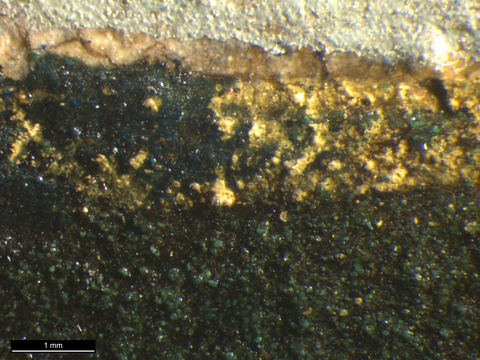
Condition of Paint
Adhesion to the ground and cohesion within layers appears secure. A random network of age-related micro-craquelure was observed over the entire painting, yet it appears to be concentrated within passages containing white lead such as highlights and the sky. The general loss of support and ground associated with worm tunneling and vandalism correlates to observed damages within the paint layer. The paint surface is marked with an extensive number of 1 mm insect exit holes as well as a larger associated loss within John the Baptist’s proper right hand. In addition to smaller associated scratches, a prominent mechanically induced “X”-shaped scratch extends across the Madonna’s cheek and down the length of her neck.
Extensive deterioration of the blue paint has occurred within the Madonna’s cloak (tech. fig. 20). The original paint is obscured by multiple layers of extensive overpaint, although the infrared reflectogram provides insight into the severity of paint loss (tech. fig. 19). Given that this damage is confined solely within the blue paint of the Madonna’s cloak, the damage may relate to the inherent aging characteristics of the artist’s materials, his technique, or a combination of the two. Despite the severe loss of paint, the infrared reflectogram shows what could potentially be the original monochrome underpainting illustrating the original modeling of fabric folds within the cloak.
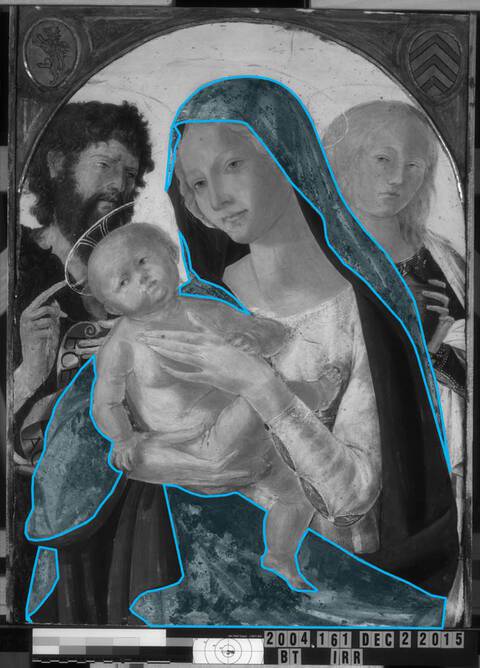
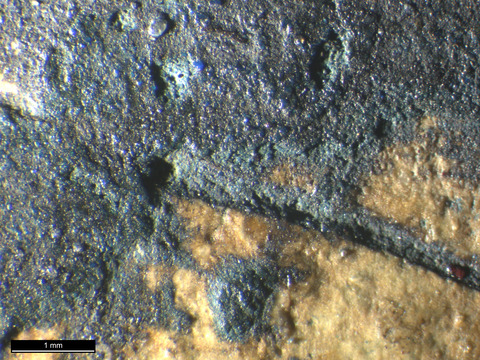
Description of Gilding
Analyzed Observed
Application and Technique:
The original halos and design work on the figure’s clothing would have been embellished in gold through mordant gilding (tech. fig. 21)—a technique in which the mordant (adhesive) was brushed directly on the paint surface using a small, fine-tipped brush, allowed to dry to an appropriate tackiness, and followed by the laying of gold leaf. Once the mordant dried, excess gold was brushed away revealing the artist’s embellished decorative design.
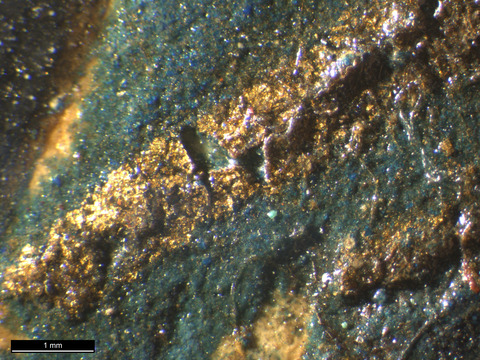
Tools:
The mordant was likely applied with small fine-pointed brushes that would allow for the precise application of material to delineate the delicate elements of the design within the halos and embroidery.
Condition of Gilding
The gilding exhibits an extreme degree of degradation, and nearly all of the gold has been lost. A small, fragmented segment of the gilt design on the Madonna’s cloak measuring approximately 5 × 2.5 cm in the bottom-left corner remains intact (see tech. fig. 21). Random trace flecks of gold were also observed under magnification; however, understanding if they are remnants of original material or transfer from past restoration/framing campaigns has not yet been investigated. Loss of gilding was of primary interest in the examination of this painting. This seemingly complete loss of gold presents the possibility that for some unknown reason gold was never applied; however, it is highly unlikely given that the altered surface characteristics of the remaining picture layer suggest a mordant was undoubtedly applied to the surface of the paint in preparation for gilding.
The underlying paint remains intact in some areas, while in others, interlayer separation seemingly related to narrow aperture age craquelure confined within the paint layer occurred between the paint and ground (tech. fig. 23). Where paint remains within the contour of the original halo, the surface displays amplified texture, and in some instances, is depressed. Furthermore, remnants of a dark degraded material, likely residual varnish resins and consolidants from past treatment campaigns, also remains. Age-related craquelure within formerly gilded contours differs from that within the surrounding paint (tech. fig. 24): the pattern appears more pronounced, and it delineates the contour of the halo in localized passages. Where paint is lost and the ground made visible, a near perfect recessed channel outlines the original gilded design (tech. fig. 22). These characteristics do not appear to occur in a uniform manner. Rather, they vary from location to location with seemingly no established pattern of consistency or regard for location within the composition or pigment identity.
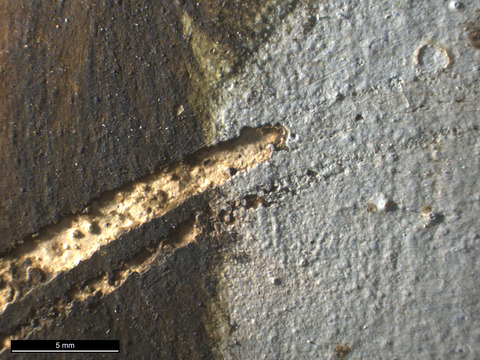
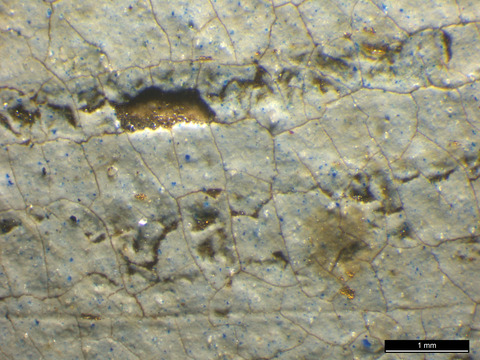
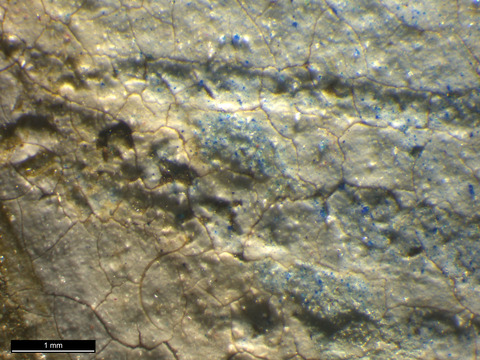
No explanation for such damage and loss is known. It could relate to the history of insect infestation, the effects of which undoubtedly affected both the support and picture layer. However, the damage is systematically confined to the gilded design and lacks the random pattern of worm tunneling. A more likely explanation would identify the damage and loss as a product of past cleaning campaign(s) and/or age-related insecurities induced by the interaction of the mordant with the paint layer.
An enhanced X-radiograph (tech. fig. 25) provides information about the gilding design. Darker areas of the design where paint is lost provides information regarding design elements of the original gilding, which follows a pattern much like that seen in technical figure 26.
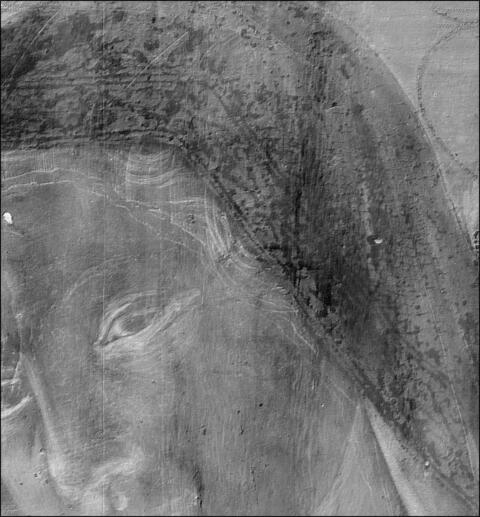
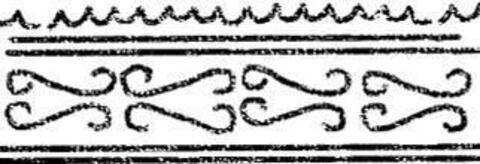
Description of Varnish/Surface Coating
Analyzed Observed Documented
| Type of Varnish | Application |
|---|---|
| Natural resin | Spray applied |
| Synthetic resin/other | Brush applied |
| Multiple Layers observed | Undetermined |
| No coating detected |
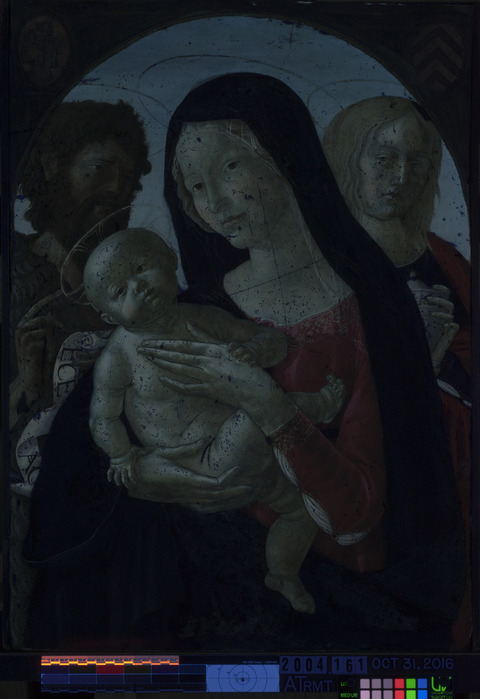
At present, a thick layer of Paraloid B-72 coats the painting. The varnish was applied during the 2016 treatment. Gamblin Conservation Colors were used to complete inpainting and can be identified in the ultraviolet-induced visible fluorescence photograph (tech. fig. 27).
Condition of Varnish/Surface Coating
The varnish is well saturating and remains in good condition.
Description of Frame
Original/first frame
Period frame
Authenticity cannot be determined at this time/ further art historical research necessary
Reproduction frame (fabricated in the style of)
Replica frame (copy of an existing period frame)
Modern frame
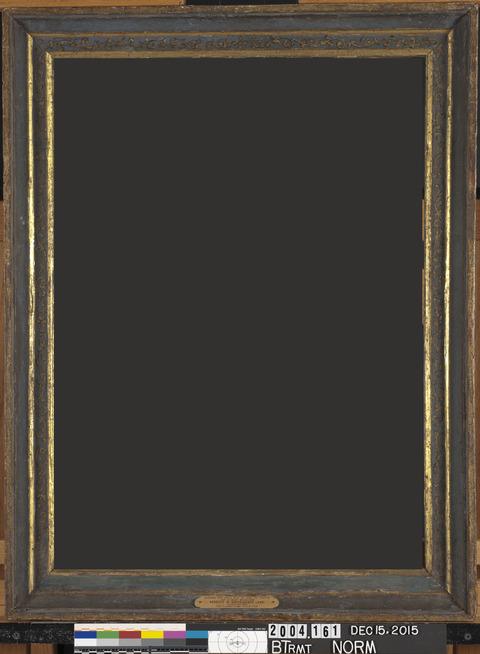
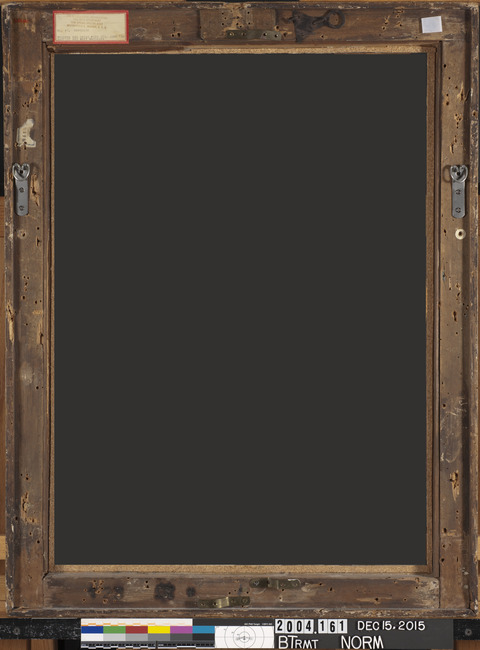
Frame Dimensions:
Outside frame dimensions:
83 × 63.8 × 6.8 cm
Sight size:
70.2 × 50.9 cm
Distinguishing Marks:
Front:
None
Back:
Item 9. Burnt-in collection mark of Count László Károlyi (owner of the painting from about 1913 to 1936)10 on the back of the frame’s bottom rail. The same burnt-in collection symbol is present on the back of the panel: “123 / LK / P”
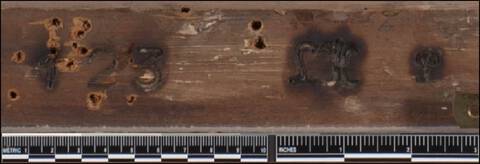
Item 10. The Clowes Fund paper collection label on left end of top rail: “THE CLOWES FUND, INCORPORATED / FINE ARTS DEPARTMENT/ 3744 SPRING HOLLOW ROAD / INDIANAPOLIS 8, INDIANA, U. S. A. / NO. 37. NEROCCIO / MADONNA AND CHILD WITH STS. JOHN THE / BAPTIST AND MARY MAGDALEN” (tech. fig. 29)
Item 11. Red paint Indianapolis Museum of Art accession number within the top-left corner of the top rail: “2004.161”

Description of Molding/Profile:
Per Timothy Newbery, the mitered poplar frame originates from Siena and was constructed about 1520 (tech. fig. 28, 32).11 The wood was identified by Peter Klein in 1999 to be poplar (Populus ssp.).12 The frame as it exists today was reduced in size, and its surface reworked.
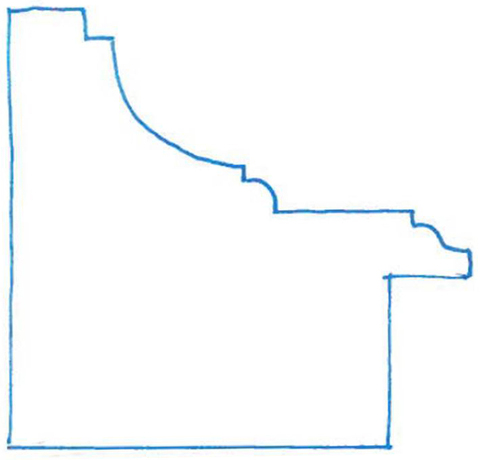
Condition of Frame:
The overall frame structure remains secure, and the mitered joins are stable. However, the frame is in poor aesthetic condition. Multiple areas of loss and abrasion to the paint and gesso exposes the underlying wood. Insect tunneling and exit holes identical to those noted on the panel are visible on the frame’s back (tech. fig. 29). The painted design within the inner cove of each frame member is completely lost from the bottom rail, and the surface is covered in poorly applied thick, matte blue and gold overpaint.
Although the original hanging hardware was replaced for more stable installation hardware, the original hanging hardware has been retained and is nailed within the recessed groove on the top frame rail (right of center on the back).
Notes
-
Abbreviation for “Ecce Agnus Dei” (“Behold the Lamb of God.” See catalogue entry.) ↩︎
-
Further research is necessary to interpret the meaning of each motif. However, the symbols may represent the Chigi family and/or the Saracini House coat-of arms. See unpublished provenance-related research in File C10058, Clowes Registration Archive, Indianapolis Museum of Art at Newfields. ↩︎
-
Paul A.J. Spheeris, “Conservation Report on the Condition of the Clowes Collection,” 25 October 1971, Conservation Department Files, Indianapolis Museum of Art at Newfields. ↩︎
-
Martin Radecki, Clowes Collection condition assessment, undated (after October 1971), Conservation Department Files, Indianapolis Museum of Art at Newfields. ↩︎
-
Memorandum from Martin Radecki to Bret Waller, “Conservation work on Clowes Fund Collection,” 16 February 1996, Conservation Department Files, Indianapolis Museum of Art at Newfields. ↩︎
-
Klein, Peter. Wood Identification for 10058 (2004.161), Neroccio – Madonna and Child panel and frame. Indianapolis Museum of Art Conservation File. February 1999. ↩︎
-
Location of loss as measured from the bottom-left corner: 27 cm × 1.5 cm. ↩︎
-
2 cm × 0.6 cm indentation on Magdalene’s proper left shoulder, located 40 cm × 50 cm from the bottom-left corner. ↩︎
-
1.2 cm × 1.8 cm indentation on Madonna’s proper left cheek, located 53 cm × 27.8 cm from the bottom-left corner. ↩︎
-
See File C10058, Clowes Registration Archive, Indianapolis Museum of Art at Newfields. ↩︎
-
Timothy Newbery, frame specialist, London, England. Visual analysis completed at the Indianapolis Museum of Art, 19 January 2012. ↩︎
-
Peter Klein, wood identification report, C10058 (2004.161), 1999, Conservation Department Files, Indianapolis Museum of Art at Newfields. ↩︎
Additional Images
